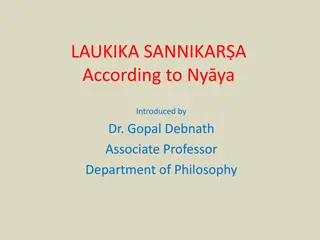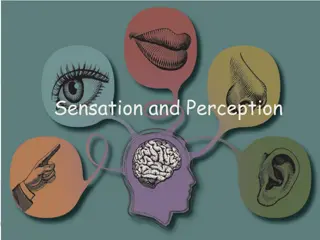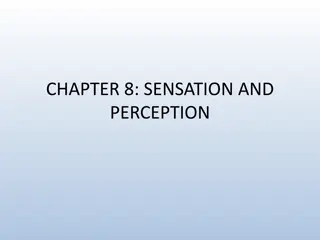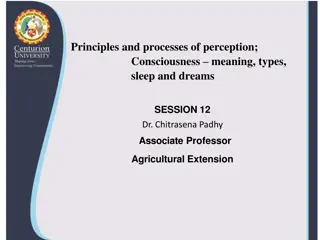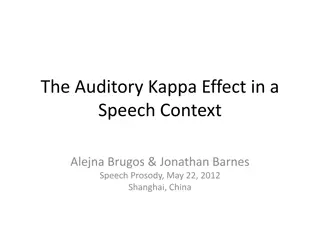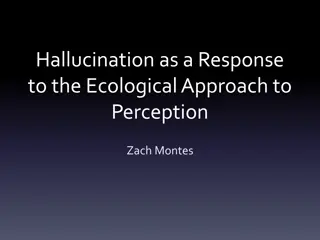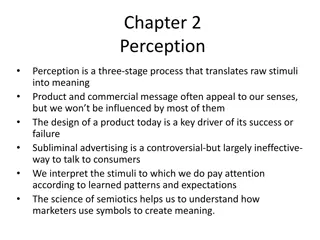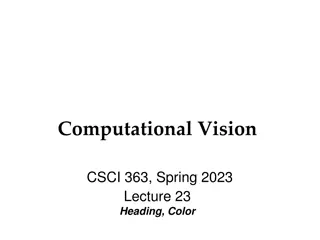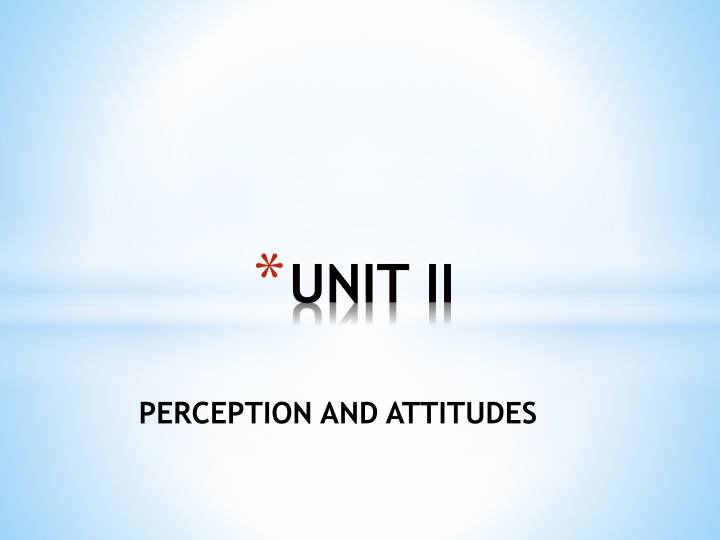
Perception and Attitudes in Organizational Behavior
Explore the meaning and importance of perception in organizational behavior, including how it influences behavior, interpersonal relationships, employee selection, and performance appraisal. Learn about the principles, elements, and factors affecting perception in a workplace setting.
Download Presentation

Please find below an Image/Link to download the presentation.
The content on the website is provided AS IS for your information and personal use only. It may not be sold, licensed, or shared on other websites without obtaining consent from the author. If you encounter any issues during the download, it is possible that the publisher has removed the file from their server.
You are allowed to download the files provided on this website for personal or commercial use, subject to the condition that they are used lawfully. All files are the property of their respective owners.
The content on the website is provided AS IS for your information and personal use only. It may not be sold, licensed, or shared on other websites without obtaining consent from the author.
E N D
Presentation Transcript
*UNIT II PERCEPTION AND ATTITUDES
*Meaning and Definition: *Stephen P Robbins defines Perception as a process by which individuals organize and interpret their sensory impressions in order to give meaning to their environment . *According to Udai Pareek Perception can be defined as the process of receiving, selecting, organising, interpreting, checking and reacting to sensory stimuli or data . *It is a process which involves seeing, receiving, selecting, organising, interpreting and giving meaning to the environment.
It is important to study perceptions in the study of Organization Behaviour, because people s behaviour is based on their perception of what reality is and is not on reality itself . Perception affects the outcome of behaviour, thus the understanding of human perception particularly in the organisational setting is important for controlling and directing the work force of the organisation.
In the organisational setting is knowledge and understanding of Perception important to manager in the following areas: (1)Interpersonal working relationship : Organisations intend to have integrated behaviour , if there is misperceptions it usually leads to strained relations. (2)Selection of Employees: Much of the information's provided at the time of selection by the candidates is vague and managers are subjected to many perceptual problems . Knowledge of perceptions helps the managers to manage the people effectively in the organisation. (3)Performance appraisal : Appraisal of subordinate s performance is highly effected by the accuracy of manager s perceptions. Managers must positively evaluate the subordinates.
Principles or Elements of Perception : 1. Selection of Stimuli ( ): For further processing while some are screened out. They may be internal or External factors. 2. Organisation of Stimuli : In order to make sense out of it. 3. Interpretation of Stimuli : People or Perceiver interpret the meaning of what they have selectively perceived and organised in terms of their own assumptions of people, thing and situations. They also become judgmental as well and tend to interpret the things as good/bad, beauty/ugly and so on which are most relevant to the situations.
Factors Affecting Perception: The Perceiver When an individual looks at a target and attempts to interpret what he or she sees, that interpretation is heavily influenced by personal characteristics of the individual perceiver. The Target Characteristics of the target that is being observed can affect what is perceived. The Situation The context in which we see objects or events is important. Elements in the surrounding environment influence our perception.
All the above factors are of two kinds 1. Internal (Endogeneous) Need & Desire: Perception varies with once need and desires Personality : Experience :With successful experience more accurate perception 2. External (Exogeneous) Size : Larger the size more is the probability that it is perceived. Intensity : Eg: Advertisers use different colours to attract and gain attention Frequency/Repetition : Contrast/ Attracting Status of individuals Movement : people pay more attention to moving objetcs.
Process of Perception Inputs Throughputs Output Stimuli /Data Action Selection Organisation Interpretation
1.Receiving Stimuli : First Process of Perception. Stimuli is received may be external or Internal. 2. Selection of Stimuli : People selectively perceive objects or things which is interesting to them most in a particular situation and avoid those for which they are indifferent. It Is called selective perception which involves two psychological principles : a. Figure Ground Principles : Stimuli is selected for further processing which one finds important are selected . Meaningful Bits and pieces are called Figure . Meaningless ones are labelled as grounds . b. Relevancy : People selectively perceive things that they consider relevant to meet their needs and desires.
3.Organisation of Stimuli/Data: Organizing the bits of information of into meaningful whole is called Organization i. Grouping : It is based on the similarity or proximity of various stimuli perceived. ii. Closure : When people face with incomplete information and tends to fill the gap themselves to make it more meaningful on the basis of their experience, past data etc. Thus, the tendency tonform a complete message from an incomplete one is known as closure. iii. Simplification : People with overloaded Information try to simplify it to make it more meaningful and understandable. Iv. Interpretation : Assigning meaning to data.
Factors Effecting Interpretation of Organised Data 1. Halo Effect: Drawing a general impression about an individual based on a single characteristic or trait . When one trait of a person or thing is used to make an overall judgment of that person. Eg. 1. First Impression should be the best impression. 2. If you are lazy yet smart, try projecting your smartness before your laziness comes to light . It ll help in the long run. 2. Attribution : Human behaviour in terms of cause and effect Eg: Prosperous worker Interest of Organisation Overtime Poor Worker Need of Money
3. Stereotyping: Individual is judged on the basis of the characteristics of the group to which they belong. It Makes perception inaccurate based on a false premise about a group. Eg: Older workers cannot learn new skills . 4. Personality : Effects what is to be perceived. Secure individuals having faith in their individuality perceive things favorable. 5. Situation : Context in which we observe or see things also influences our perception about them. Eg: If you are seen with rowdy gang always you will also be considered as one among them even if you are not .
6. Perceiver : Perceivers attitude, motives, interest , past experience and expectations effects perception. Eg: If you purchased Hero Honda bike and when you start riding it you suddenly note a large number Hero Honda plying on the road. 7. Action: Last phase of perception process. It is the resultant behaviour of individuals emerging from the perceptual process , it may be positive or negative. Eg: Reaction .
Distortion in Perception : Incorrect understanding of abnormal interpretation of a perceptual experience. What you can see in below image ?? Can you see a girls face? An old man blowing some mouth organ Some perceive that the image is of a man, while others perceive it as an image of a women this difference of perception is known as Distorted Perception . OR
Distorted Perception may be of two types 1. Illusion : A mistaken perception or wrong perception is called Illusion. Eg: Rope may be perceived as snake in dark. 2. Hallucinations : False Perception , Perception without any factual basis i.e Imaginary perception experienced in working state. Hearing, Seeing or feeling a non-existing object or stimuli. Eg: Seeing a Ghost,


